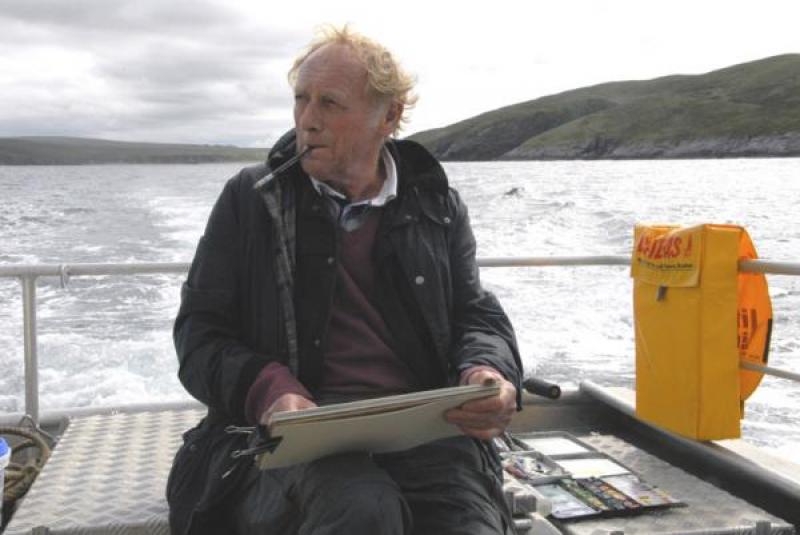What Do Artists Do All Day?, BBC Four | reviews, news & interviews
What Do Artists Do All Day?, BBC Four
What Do Artists Do All Day?, BBC Four
Norman Ackroyd reveals the mysteries of his working day in an engaging new series

You might phrase the question rhetorically: “just what do artists do all day?” Or you might ask it in the spirit of genuine enquiry: after all, to many, the artist is an exotic creature whose mystery is still to be fully penetrated. Either way, it’s pretty clear that though it may not be “a proper job”, artworks don’t make themselves.
The title was enticing, but, in fact, What Do Artists Do All Day? turned out to be, well, just another low-key television profile of an artist: the relatively little-known Royal Academician Norman Ackroyd. But it’s good the title didn’t suggest any of that because then I might not have watched it, and that would have been a shame as this really was a lovely programme about a wonderful artist. What’s more, it gave the viewer a proper insight into what he does all day.
I’m not sure I’ll be as captivated by a day spent in the studio of Jack Vettriano
In his warehouse studio in Bermondsey, an area of South East London that certainly wasn’t very swanky when he moved there 30 years ago but is now surrounded by fashionable eateries and wine bars, Ackroyd worked on his favourite medium – aquatints. If that doesn’t mean very much to you, it’s a form of copper plate etching, using the application of acid to make the marks. The Leeds-born artist genially talked us through the process.
Ackroyd is an artist primarily interested in landscape. In the early Seventies, after a visit to New York where he’d briefly considered moving but from whose frenetic energy he soon recoiled, he decided to reject both abstract art and what many might call contemporary subject matter. He decided the human figure and the landscape were the two subjects worth exploring in art, though, in fact, all his landscape prints are devoid of human figures. Now in his 70s, his work is currently preoccupied by the remote coastal landscape of the Shetland Islands, and the piece he was working on depicted the rocky island of the delightfully named Muckle Flugga, whose name translates from old Norse to the more prosaic “large steep-sided Island”.
The process was captivating, as well as touch-and-go. When Ackroyd finally took the finished piece off the printing press - a huge clunking piece of old-fashioned equipment that Goya himself might have used - he was quietly pleased, though there was still some finessing to do. The soft dark tones of a great rock was surrounded by a flock of white birds, tiny specks pitting a velvety sky. He could explore these islands for the rest of his life, he said.
I’m not sure I’ll be as captivated by a day spent in the studio of Jack Vettriano, while taxidermist Polly Morgan has already talked quite a bit about her work, but this was a great start to the series.
rating
Explore topics
Share this article
The future of Arts Journalism
You can stop theartsdesk.com closing!
We urgently need financing to survive. Our fundraising drive has thus far raised £49,000 but we need to reach £100,000 or we will be forced to close. Please contribute here: https://gofund.me/c3f6033d
And if you can forward this information to anyone who might assist, we’d be grateful.

Subscribe to theartsdesk.com
Thank you for continuing to read our work on theartsdesk.com. For unlimited access to every article in its entirety, including our archive of more than 15,000 pieces, we're asking for £5 per month or £40 per year. We feel it's a very good deal, and hope you do too.
To take a subscription now simply click here.
And if you're looking for that extra gift for a friend or family member, why not treat them to a theartsdesk.com gift subscription?

Add comment